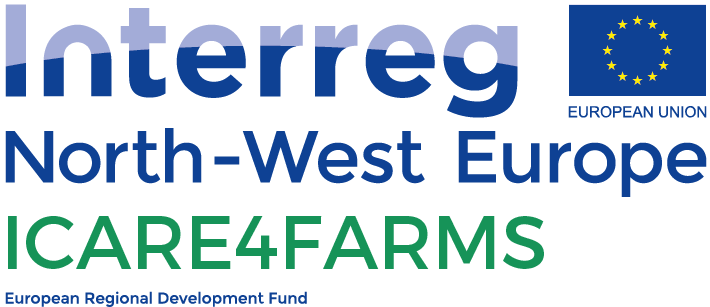March 22nd, partners of project ICaRE4Farms visited the Belgian pilot site.
On a lovely sunny spring day, Valérie Moreau, Floortje de Vink from Laval Mayenne Technopole, Liqun Feng from Fengtech and Kristof Severijns from Innovatiesteunpunt meet to discuss details of the future installation with the owners of Relief the new sub-partner that will be integrated into the ICaRE4Farms project.
Farm Relief from Groep LVL, run by Emelie Laermans and her Father Renée Laeremans, both continuously innovating and being a step ahead on renewable energy solutions will host the 3rd pilot of the IcaRE4farms project.
Farm Relief is mainly a veal farm and there are 4 stables where they rear around 3500 calves. One of their stables which contains 850 calves will host the pilot site. To feed the calves they need 350 000 kWh/year for heating the water. The solution they have today is a wood boiler.
What type of farm is it?
Relief farm is mainly a calf rearing (veal) farm and on which there are 4 stables where they rear around 3500 calves. One stable that has been chosen to be equipped with solar thermal energy systems is a stable holding 850 calves.
What is the existing heating requirement?
They need about 350 000 kWh/year to heat the water. The water is used to mix feed for the calves and to clean the buildings.
How is it heated oil gas etc, and how much is used?
Today it is heated by a wood boiler, about 600-800 kg/day, totalling 88 Tonnes of wood/year.
Are the buildings recently constructed, ie newer buildings may be more energy efficient?
The stable Atlas is their most recent and innovative building.
How many panels are proposed?
The solar thermal energy system is composed of 24 units capable of creating 150 000 kWh annually.
Is a building permit required (like the UK and Ireland would)?
There is a building permit required.
When is construction likely to commence? How long should construction take?
The construction will be done in two phases. The first phase is to prepare the ground and pour the concrete, about a week of work and 3 weeks for the concrete to dry. Then a second phase of building the STE central and connecting the pipes will take about 4 weeks.






